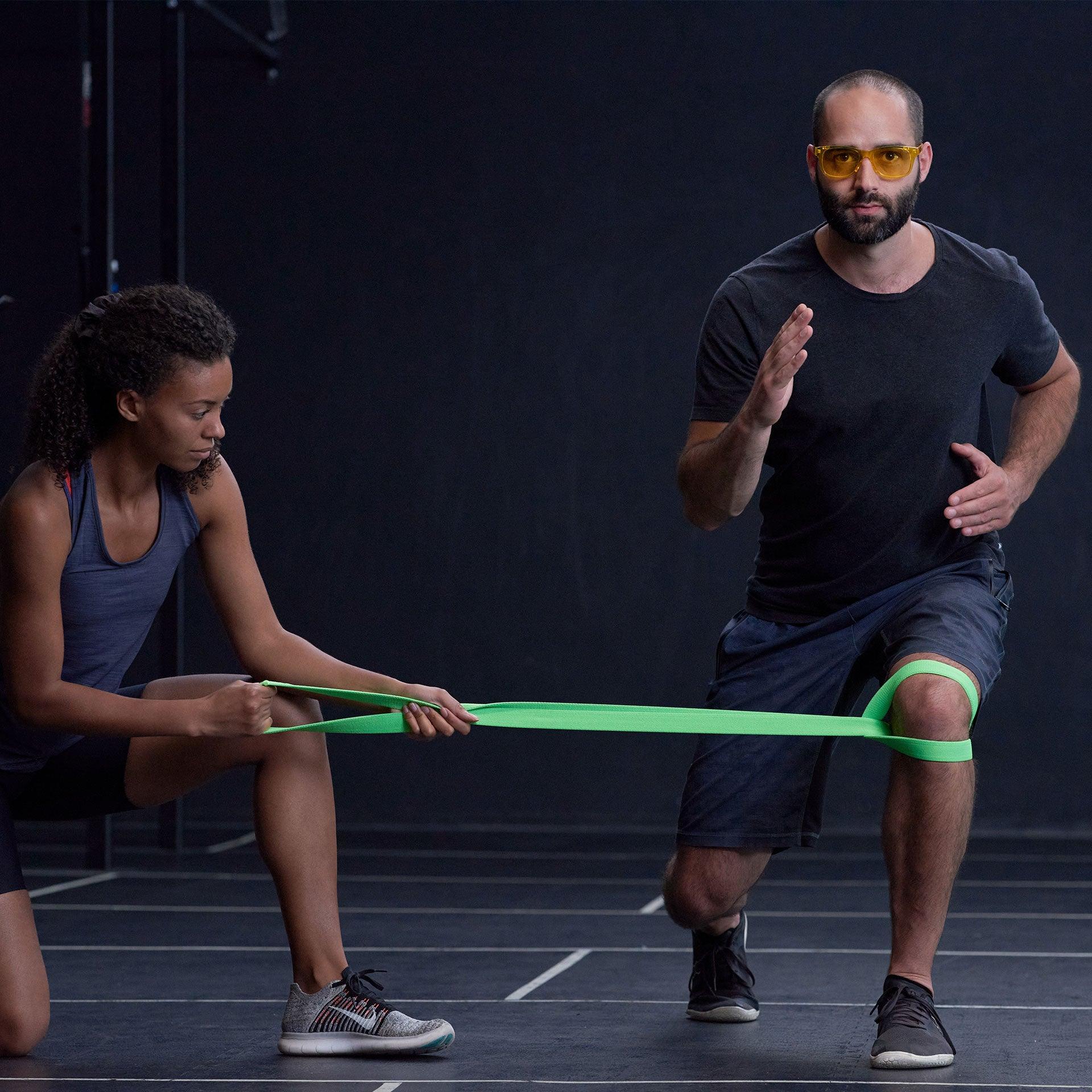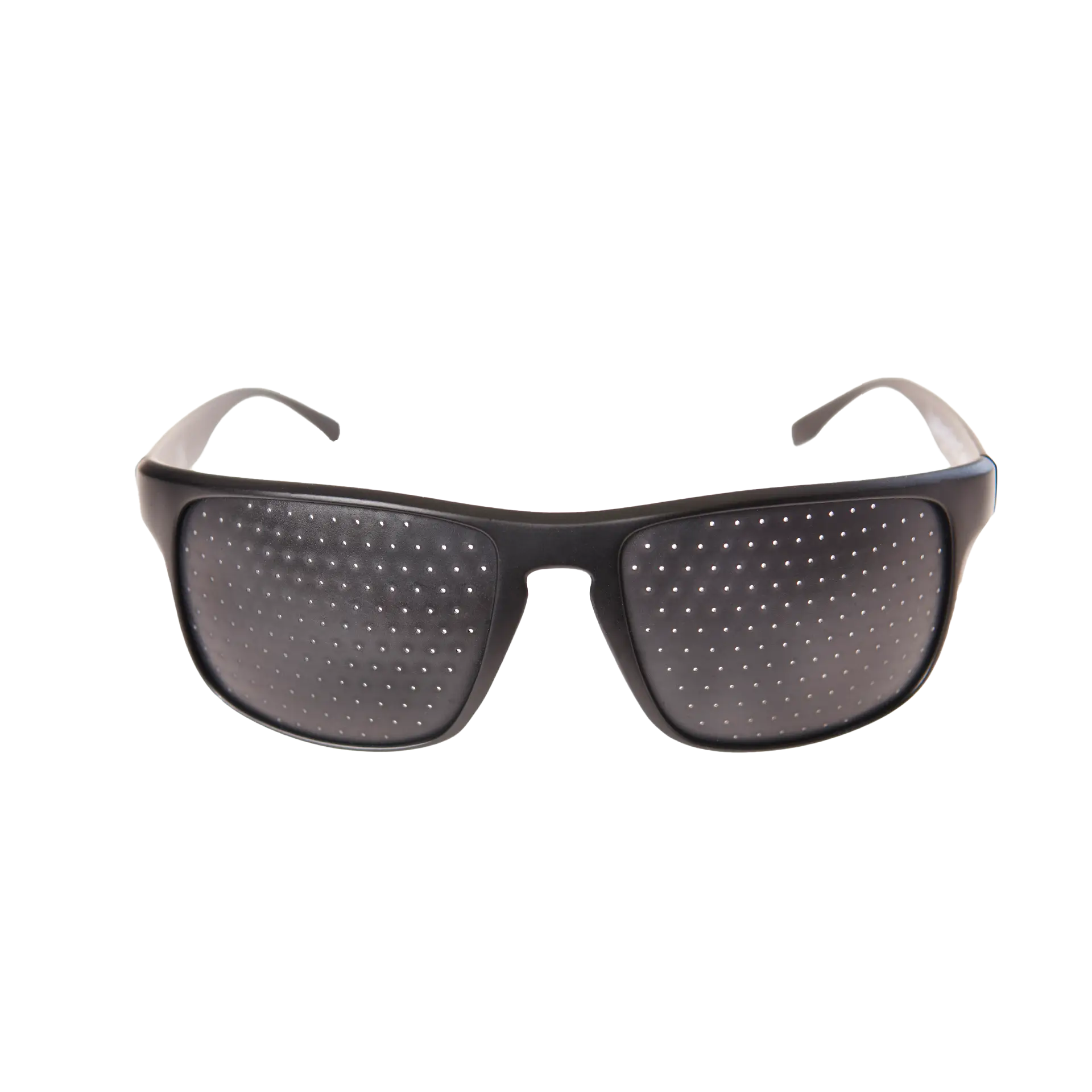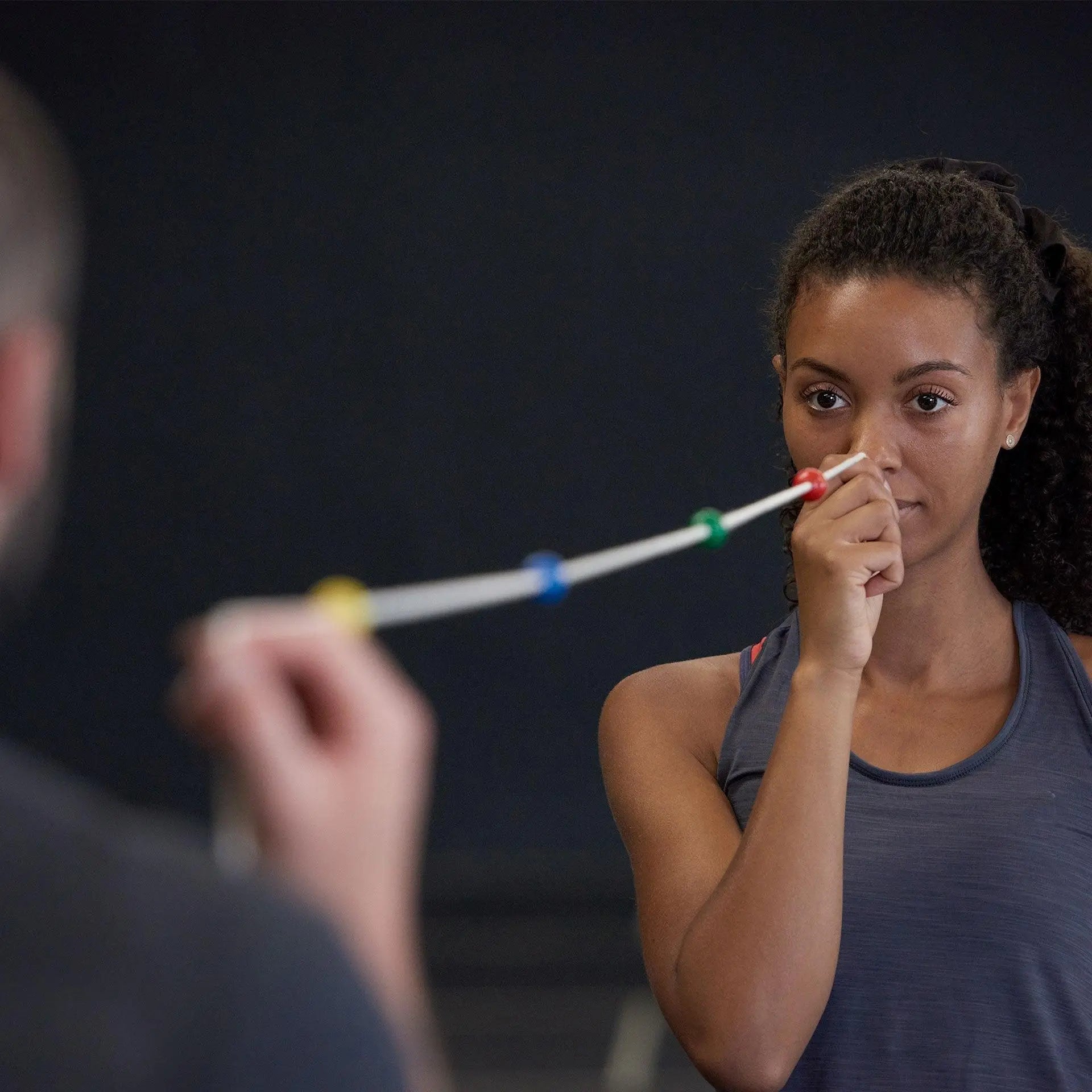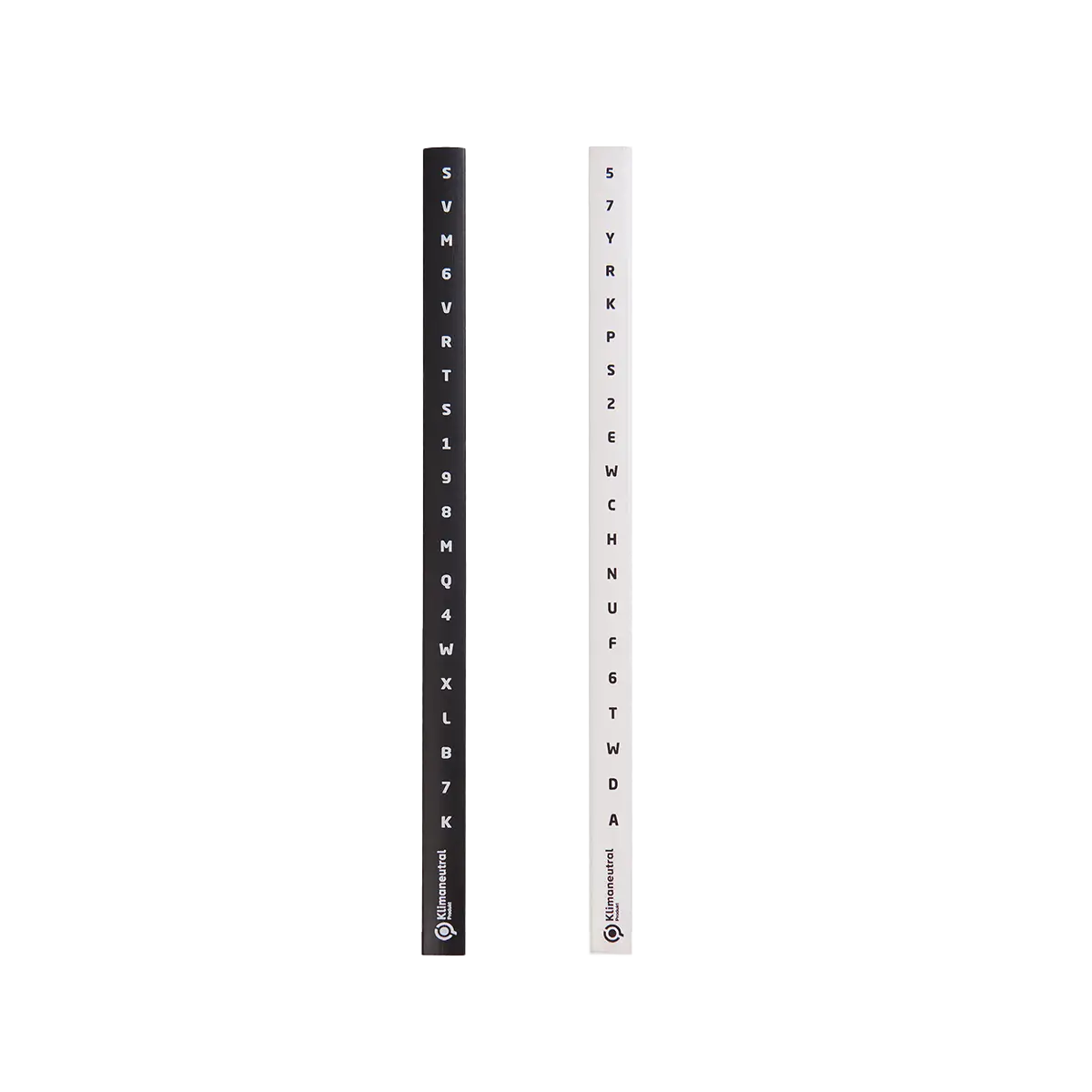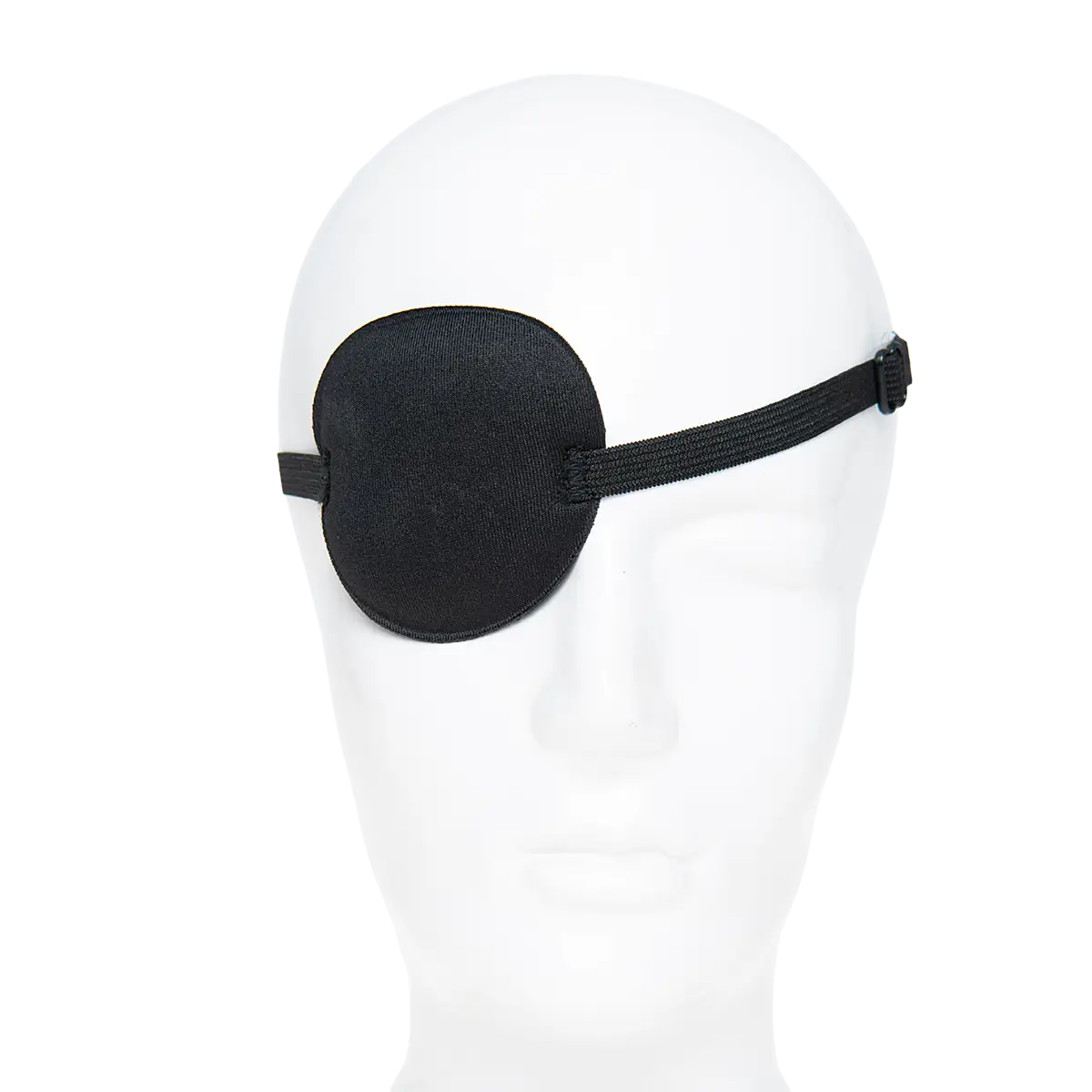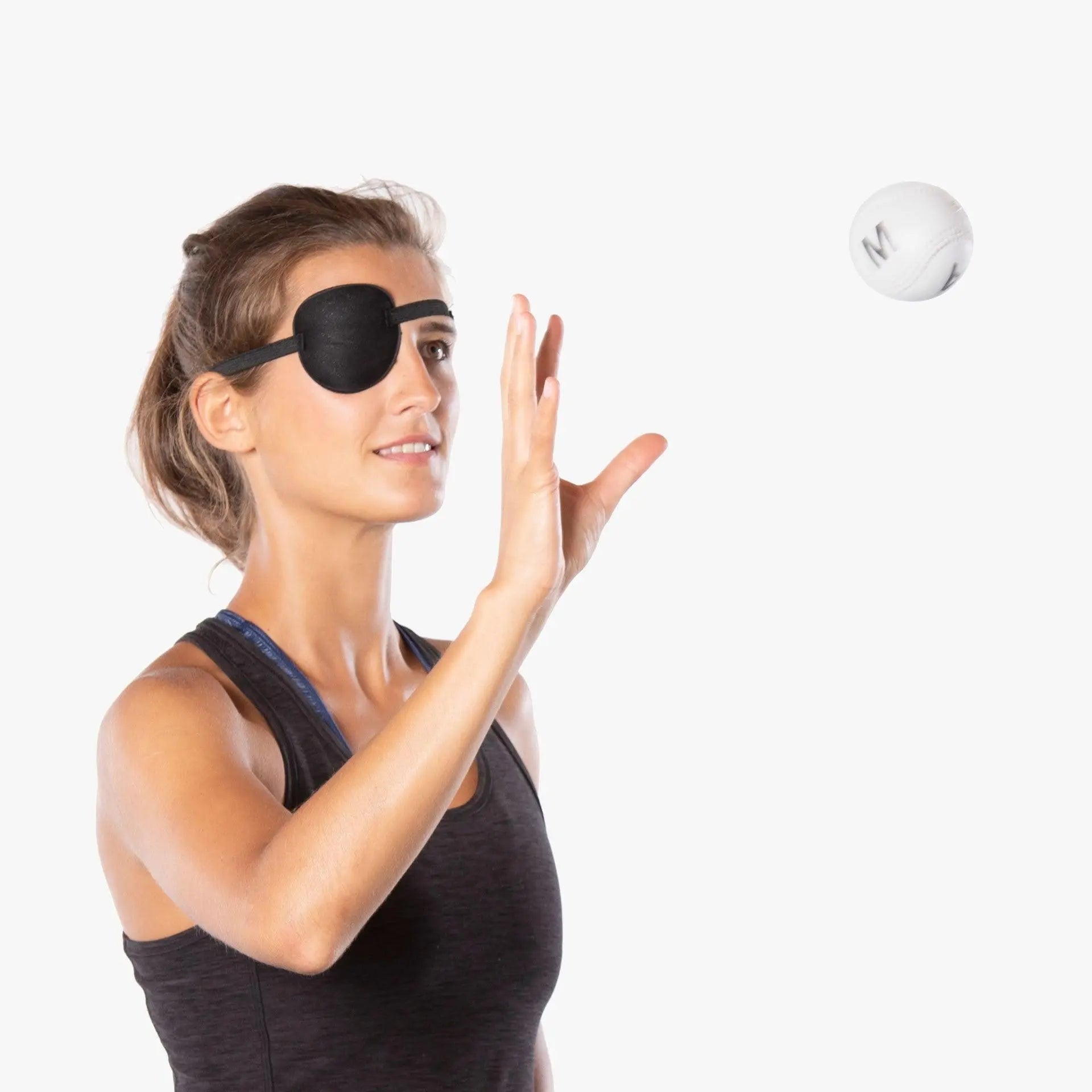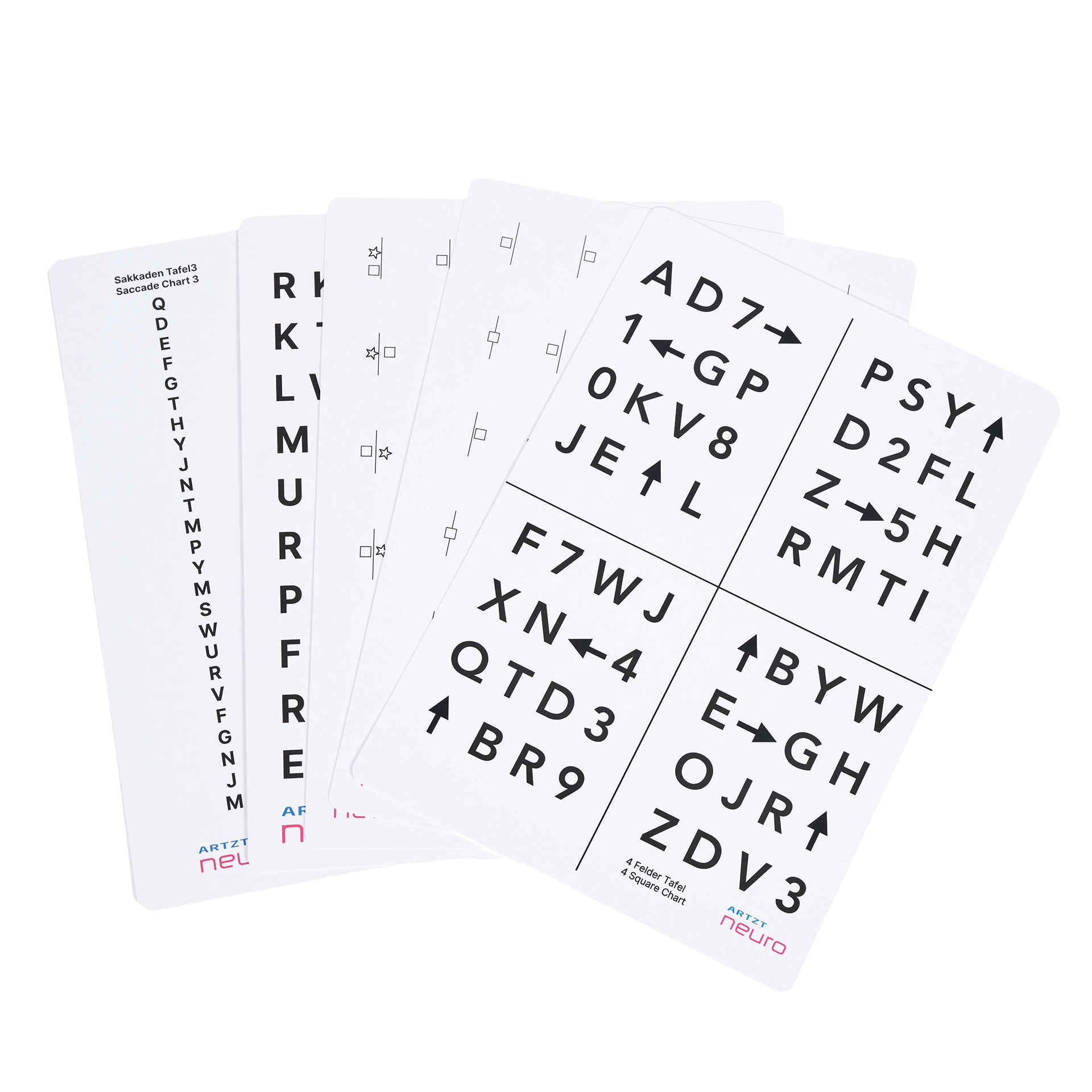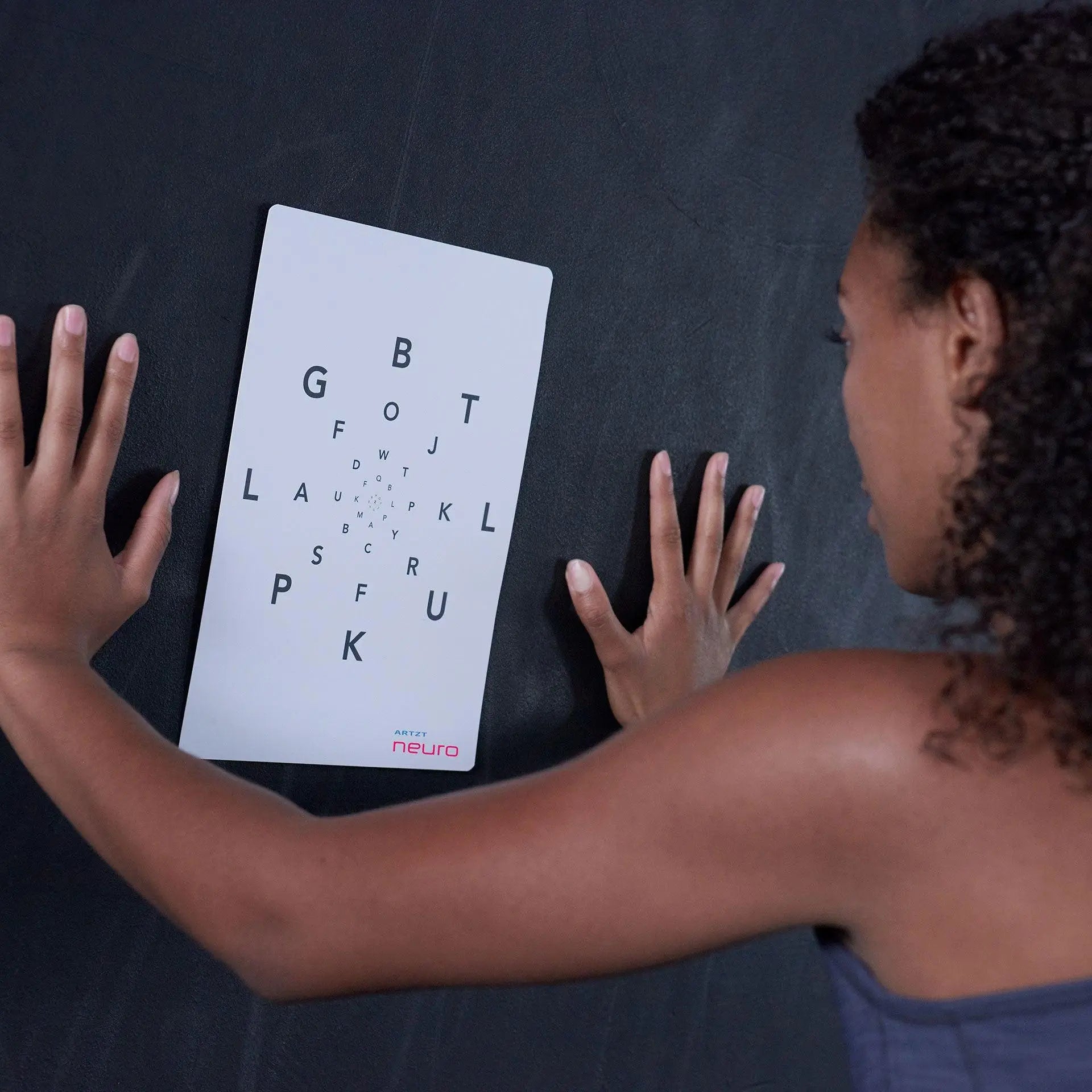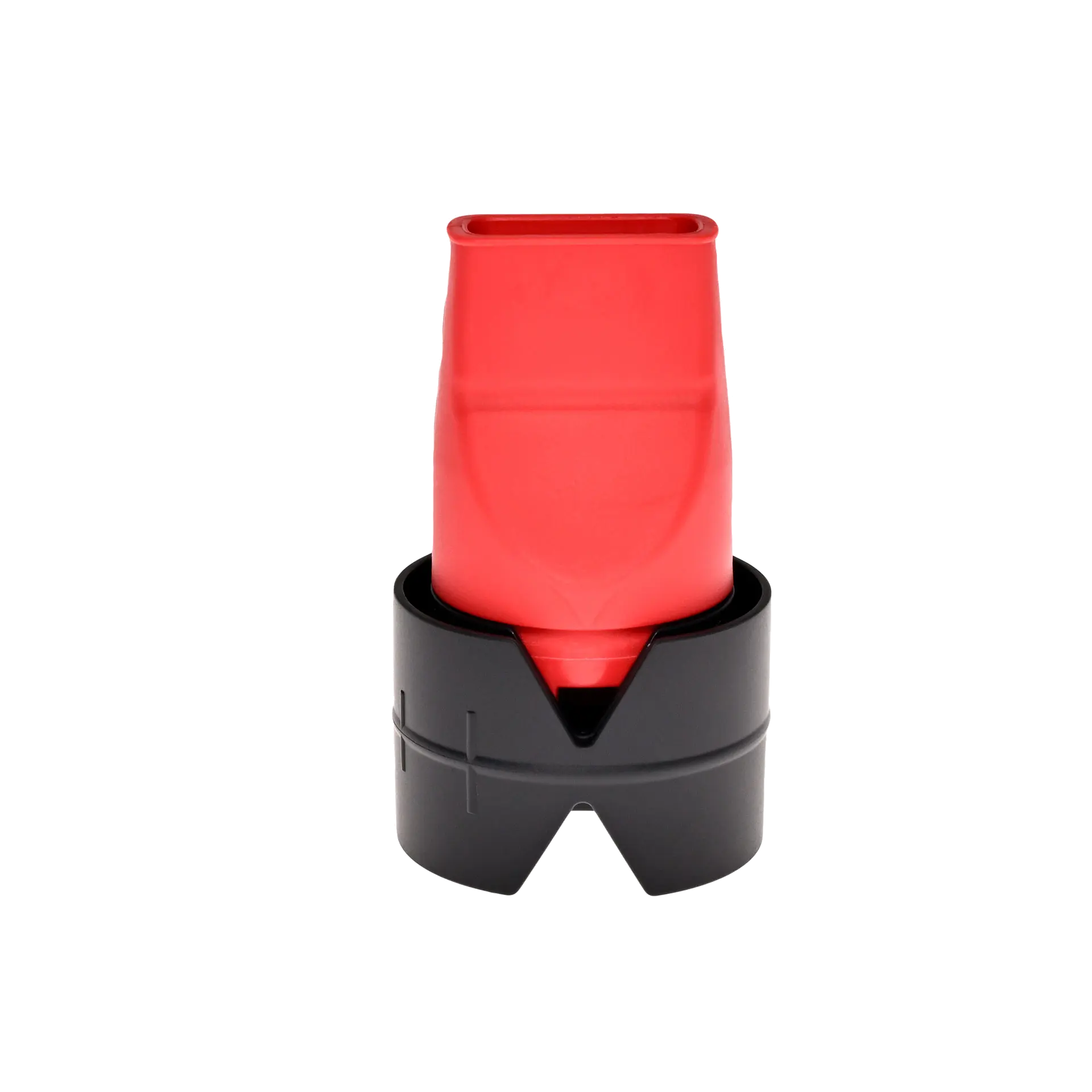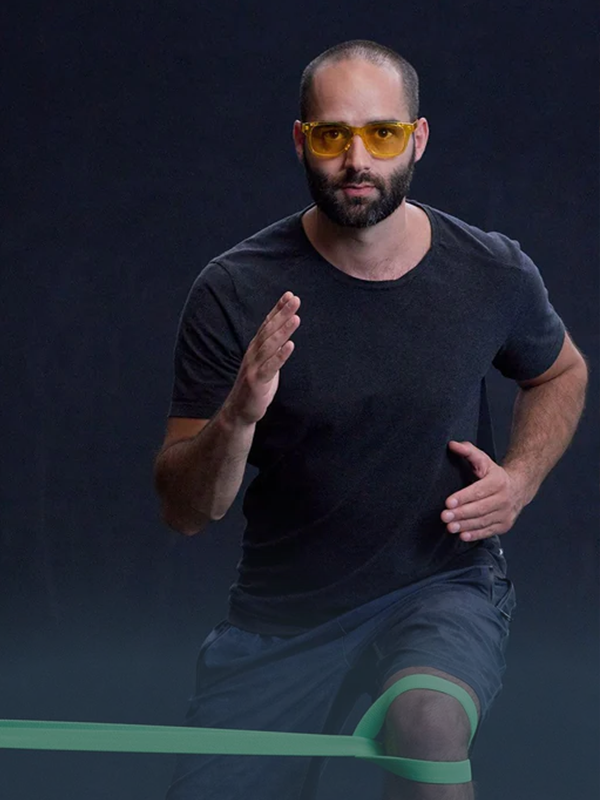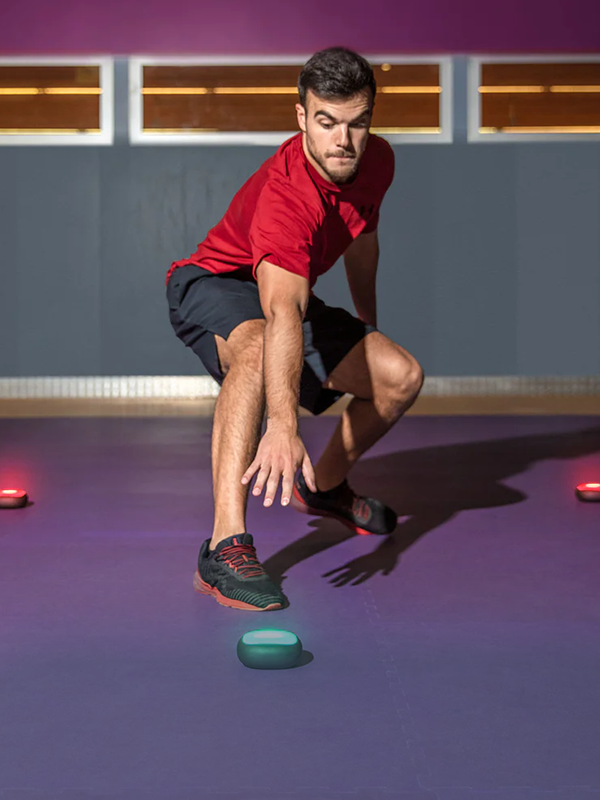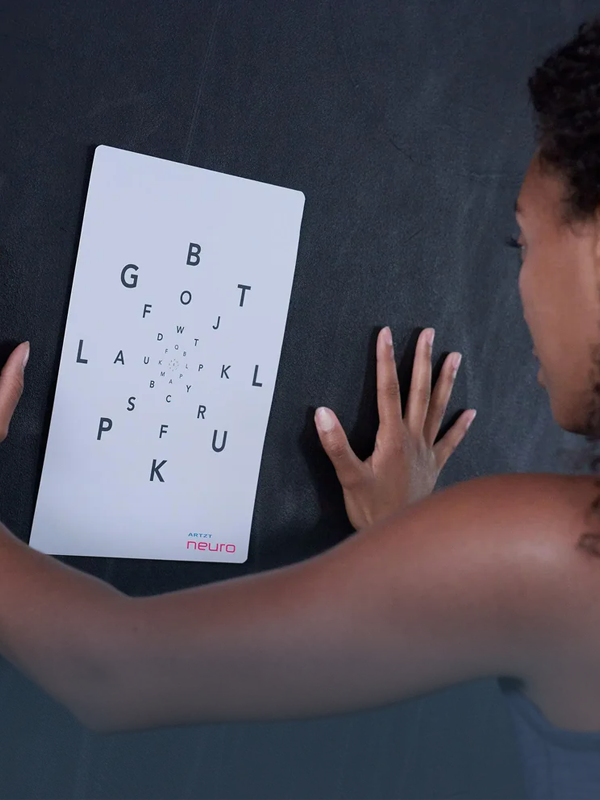Reading time: 5 minutes
Do you often suffer from back pain, tension or lumbago? Neuroathletics trainer Kevin Grafen from Fitnessland Kensho shows you 6 back exercises that can help with your back training against acute pain. This way you can avoid pain and medication and keep your spine healthy in the long term.
Contents
Lack of exercise and long periods of sitting are the most common causes
There are many different causes of back pain in everyday life. It often manifests itself through various symptoms such as pulling, stabbing or tension. The most common cause today is a lack of exercise due to frequent sitting . If you work at a desk, you spend around eight hours a day sitting down - not including after work. In addition, a crooked posture and permanently bent legs are often potential triggers.
This puts a strain on the intervertebral discs, which are constantly under pressure, and on shortened ligaments. Sitting with bent legs puts a strain on the knee joint and the entire back muscles in the long term.
The bad news: The human body is simply not designed for constant sitting.
The good news: You can do something about back pain yourself using simple means. And you can do it every day – we'll show you how.
Just a few minutes of exercise can help
In addition to heat, exercise is particularly helpful for everyday back pain. If you sit all day, you should get up every 30 minutes or so, stretch and ideally do some exercise. A short, regular break is recommended anyway to clear your head and gain new mental strength. One to three minutes can be enough.
Maybe you have the opportunity to walk a few steps. Why not take a short walk during your lunch break? Many offices have height-adjustable desks. They allow you to vary your standing and sitting positions without having to interrupt your work, which takes the strain off your back.
Strong back, healthy body – how targeted training prevents pain
Tense and under-challenged back muscles want (and need!) to be trained regularly in everyday life. The muscles in the neck and buttocks are also often affected. The right back exercises help with this and can also protect you from injuries such as slipped discs and lumbago. Such exercises also help to reduce the risk of other spinal disorders. Trained back muscles also prevent muscle tension and promote a healthy and straight posture .
>> Reading tip: 11 Theraband back exercises for back pain
For a short break in between, we have 3 simple neuroathletic exercises for you that can help you with regular everyday back problems .
3 Neuroathletic Exercises for Back Pain
Do you also have back pain, perhaps limited mobility in the back of your leg , and perhaps you've been sitting too much in your home office, causing your neck to hurt? The following three neuroathletic exercises can help you.
First, get an overview of the starting position by testing two or three times how far down you can go in the forward bend. Can you reach the floor with your fingertips? You can then check directly whether the current situation has improved after the first exercise.
Exercise 1: Shoulder Raise
In the first exercise, you will be helped by a super band , which you use to raise and lower your shoulders against the resistance while standing with your legs shoulder-width apart. This not only trains the muscles in your shoulders and neck, but also stimulates the 11th cranial nerve, which is responsible for relaxing the extensor muscles, i.e. the backs of the legs.
Here's how it works: Stand on the Super Band with your feet together and grasp it as low as you can. Stand upright. Then pull the band up with your shoulders. Keep your legs together.
Do 5 - 10 repetitions.
Exercise 2: Eye Push-Up
For the second exercise you need a Vision Stick from the Neuroathletics Tools .
This is how it works: Hold the Vision Stick in front of you with your arm outstretched, look at the letter above and then slowly pull the stick towards you between your eyes - as far as you can still clearly see the letter. Squinting is intentional!
Then go back to the starting position. After several repetitions, you will have activated both the extensor and flexor muscles by alternately looking at things close up and far away. These are controlled in certain areas of the midbrain.
Do 5 - 10 repetitions of this.
Exercise 3: Tongue Circles
This exercise has a calming effect on the neck muscles and can help relieve headaches. The best thing is that it works without any equipment.
Here's how it works: Simply make clockwise and counterclockwise circles with the tip of your tongue.
Circle 5 times to the left and 5 times to the right.
Finally, you can go into the stretching position again. You will be amazed at what has happened.
Bonus exercise: step storage
For this exercise, get an elevated position such as a chair, a box or a large cushion. The following position will help you to relieve the pressure on your lumbar spine and back muscles.
Here's how it works: Lie flat on your back and place your legs so that your hips and knees form a 90-degree angle - in a "step shape". Your lower legs rest relaxed on the raised surface.
Stay in this position for 10 to 20 minutes and breathe calmly and deeply to completely relax the back muscles. If necessary, you can repeat this exercise several times a day.
Lumbago: Tips when the pain hits
The dreaded lumbago is a sudden pain in the lumbar or thoracic spine. In medicine, this is called lumbago . The pain usually disappears on its own within two to five days. If the lumbago symptoms persist for longer, a doctor should be consulted. In stubborn cases, targeted therapy can also help, such as physiotherapy or special back exercises to strengthen the muscles and prevent recurring pain. Heat treatments and gentle mobilization of the spine can also be helpful.
3 Neuroathletic Exercises for Lumbago
Even with lumbago , exercise is better for the muscles than resting while lying down. The curved, protective posture that sufferers tend to adopt when suffering from lumbago can lead to painful tension. This can prolong the acute pain even further. You can find out which neuroathletic exercises you can try for lumbago symptoms in the video:
Exercise 1: Eye exercises
When it comes to the muscles in the back, our eyes play an important role . Both the flexor and extensor muscles are imperceptibly influenced by the position of the eye: if we turn them inwards, i.e. squint, the flexor muscles are activated. If, on the other hand, we look into the distance, we activate the extensor muscles.
This is how it works: The back and forth movement of your eyes from outside to inside and back gently activates the back muscles and can help to relieve tension and subsequently reduce pain. The Brock string with its three colored balls comes to our aid here.
The first exercise involves "eye-jumps" that result in a constant, flowing change between the outside and inside position of the eyes - from far to near. In this way, the flexor and extensor muscles in the back are alternately stimulated, which often leads to noticeable relaxation .
Do 5 - 10 repetitions of this.
Exercise 2: Diaphragmatic breathing
In many cases, acute back pain results in breathing difficulties. Conversely, this means that conscious, deep breathing can have a positive effect on your back pain.
This is how it works: Place the breathing belt tightly around your lower chest. Also hold your hands on your lower ribs. Now breathe in deeply and for a long time. Your chest should rise up and out. Then breathe out again for a long time and slowly. Then try to breathe in such a way that your stomach expands in all directions when you breathe in - as if you had swallowed a balloon that was slowly being inflated. This movement can free up your back and thus relieve and prevent back pain.
Do 5 - 10 repetitions of this.
Exercise 3: Tongue Stimulation
With the right stimulation in the mouth and throat area, you can calm and relax the extensor muscles.
This is how it works: Place the Z-Vibe on your tongue with the tongue depressor and switch the device on. Slowly push the device towards your throat. Please make sure that you do not insert the vibrating pen so far that you have to burp.
Massage your tongue and throat muscles for about 20 seconds.
Conclusion: Your back doesn’t have to hurt
With a few simple tips and exercises, you can do something about your back and lower back pain every day. Regular exercise is the key to long-term health and a strong back - it keeps you fit and can often avoid visits to the doctor.
Therefore: go for a walk, stretch every now and then and do back exercises regularly. Just a few minutes a day can strengthen your back permanently and keep your body in shape. This way you can avoid permanent pain, doctor's visits, painkillers and expensive treatments due to back pain.
Did you know? Neuroathletic exercises can also help against dizziness , neck pain or migraines .



